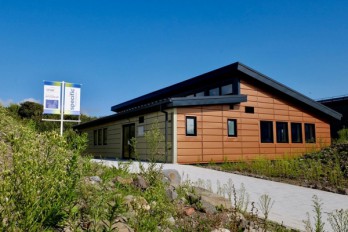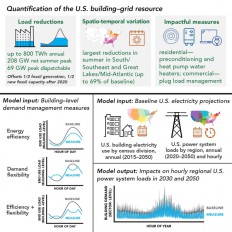Best ways to reduce energy consumption in buildings

Practices with greatest impact on energy conservation are under study
Practices with greatest impact on energy conservation are under study
Adjusting the thermostat during the winter, turning off lights when not needed, using blinds and opening windows are some of the well-known practices to save energy at home, but which of them are the most effective? Associate professors Gabriel Kamiel (University of Ontario), Wei Yang and Yaolin Lin (Wuhan University of Technology in China) are trying to find out. They developed a holistic and integrated model which considered the building enclosure, the mechanical systems, the external environment, the proportion of window opening and the shading factor based on data collected from 270 households (single and multiple units) using different heating methods. All houses were located in the city of Oshawa, Ontario, 55 km east of Toronto, Canada. To calculate the buildings’ energy consumption, the researchers simulated the occupants' possible activities on different days for various types of housing while utilizing a number of heating and cooling methods. These activities included turning on lights, using electrical appliances and the continuous adjustment of the thermostat.
"I was interested to find the trends of energy use in typical households and to understand the consumer behavior and the reasons behind high and low energy consumption. I have a strong belief that, if society boosts energy conservation (as well as other resources), we will have less of a challenge meeting future demands," explained Dr. Kamiel. "The study is a first of its kind in that it related actual energy usage in typical households to the consumer's actual trends and habits in consuming energy. The latter was obtained through surveying the inhabitants of the homes we monitored," he continued.
The results, which were published in Frontiers in Built Environment, show that window opening had the greatest impact on the energy consumption during the winter (when the heater was turned on), and using windows shades was the most important factor in reducing the energy consumed to cool the houses during the summer.
To ensure a high level of reliability in future studies though, factors such as climatic zones, occupants' attitudes, as well as financial, social and cultural behaviors will be integrated into the existing building performance simulation. The researchers believe this model could be used for creating efficient building design and for retrofit analysis as it takes into account factors such as building orientation, building envelop material, shading and control on heating and cooling.
Source: Sciencedaily
Source: Sciencedaily
Want to read more like this story?

EU Parliament is updating the EU's rules to further improve the energy efficiency of buildings
Apr, 12, 2018 | NewsFrom January 1st, 2021, all new buildings in the EU should use little or no energy for heating, cool...
The prospects for carbon-neutral buildings
Oct, 27, 2023 | NewsIn the United Kingdom, buildings account for 33% of greenhouse gas emissions and 40% of global ener...

UK’s first energy-positive office opens in Swansea
Jul, 16, 2018 | NewsThe UK's first energy-positive classroom generates more than one and a half times the solar energy i...

Energy Upgrading In Buildings Saves Billion Euros From Energy Production
Oct, 16, 2015 | NewsThe energy upgrade of EU buildings could save 80-153 billion Euros until 2050 in investment funds th...

By 2050, half of the EU citizens could be generating their own renewable energy
Oct, 10, 2016 | NewsA people-powered energy revolution is possible and may be close at hand A people-powered energy r...

Control building energy demand to preserve the electrical power resources
Jul, 07, 2021 | NewsA new study conducted in the United States quantifies how the optimization of the consumed energy in...

World Sustainable Energy Days 2018 in Wels, Austria
Feb, 01, 2018 | NewsOne of the largest conferences on sustainable energy One of the largest conferences on sustainable...

Data-Driven Siting: Revolutionizing Renewable Energy Efficiency
Dec, 20, 2024 | NewsBuilding efficient solar and wind farms requires more than just identifying areas with the most sun...

Energy-efficient houses: Gas or Electric power?
May, 29, 2019 | NewsThe selection of fuel highly affects the cost and energy efficiency of houses. Is gas or electricity...
Trending

Vertical gardens in Mexico City to combat pollution

Saudi Park Closed After 360 Big Pendulum Ride Crashes to Ground, 23 injured

Characteristics of Load Bearing Masonry Construction

Taipei 101’s impressive tuned mass damper

Dutch greenhouses have revolutionized modern farming

Federal court rules Biden’s offshore drilling ban unlawful


